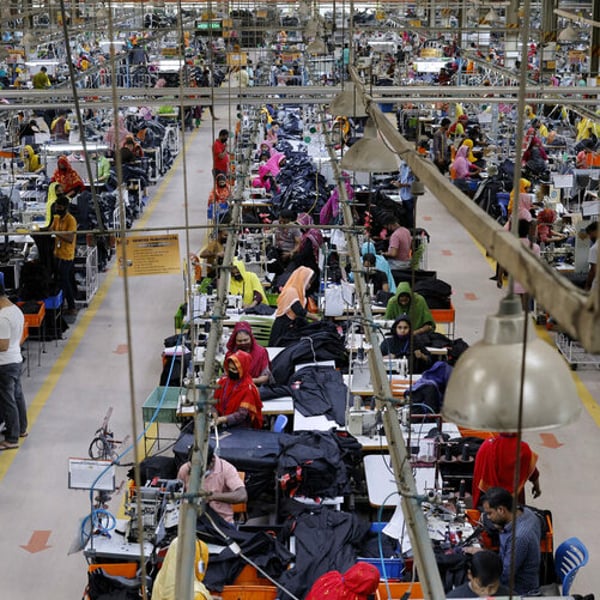By
Reuters
Published
July 11, 2025
Across Asia, unions and industry groups are raising alarms over the impact of higher tariffs by the United States on garment workers.

High tariffs might force companies to shut down or relocate to neighboring countries that offer lower tariff rates, resulting in significant job losses, they warn.
“The potential loss of jobs will cut the income and ability for workers to sustain their daily lives,” said Ath Thorn, vice president of the Coalition of Cambodian Apparel Workers’ Democratic Union, which represents 80,000 workers across 40 factories.
Several countries in Asia have received notice of new tariff rates imposed by the United States, set to take effect August 1, following the end of a 90-day pause on tariffs.
Manufacturing hubs such as Bangladesh and Cambodia will face tariffs of 35% and 36% respectively, while neighboring countries are still negotiating with the U.S. government.
U.S. President Donald Trump announced the new tariffs through official letters posted on his social media platform, Truth Social, on July 8.
The U.S. remains the largest export destination for Bangladeshi garments. The country’s exports to the U.S. totaled $8.4 billion last year, with $7.34 billion coming from garments.
In 2024, Cambodia exported nearly $10 billion worth of goods to the U.S., accounting for almost 40% of the nation’s total exports, according to government customs statistics.
More than half of U.S. imports from Cambodia were garments, footwear and travel goods such as luggage and handbags—a sector that makes up nearly half of Cambodia’s export revenue and employs over 900,000 workers.
Unions and industry groups warn that workers could be hit hard if higher tariffs push companies to relocate or shut down operations.
While Cambodia is facing a reduction from the 49% rate imposed in April, anxiety persists in the country’s garment sector, one of the key pillars of its developing economy.
Meanwhile, the U.S. and Vietnam have reached a trade agreement that sets a 20% tariff on Vietnamese goods.
“With a neighbor next door enjoying significantly lower tariffs, many companies may choose to leave Cambodia,” said Yang Sophorn, president of the Cambodian Alliance of Trade Unions, which represents thousands of women garment workers who support their families.
This fear is echoed by experts in Bangladesh, where a 35% tariff is set to take effect.
Selim Raihan, professor of economics at Dhaka University, said Bangladesh risks losing competitiveness if countries like India, Indonesia and Vietnam receive more favorable trade terms.
Such disparities could complicate supply chain decision-making and undermine investor confidence, he said.
“As production costs rise and profit margins shrink due to the tariff, many garment factories may be forced to scale back operations or shut down entirely,” Raihan said.
The new 35% tariff on Bangladeshi goods is more than twice the current 15% rate.
“With more than doubled tariff rates, can you imagine how the cost of the products will rise?” said Mohiuddun Rubel, former director of the Bangladesh Garment Manufacturers and Exporters Association (BGMEA) and now additional managing director at textile firm Denim Expert Ltd.
“The question is what happens to the tariffs for main competitor countries like India and Pakistan,” Rubel added.
The U.S. is negotiating a trade deal with India, while reciprocal tariff rates for Pakistan have not yet been announced.
Outsized effect on women
Potential layoffs in the garment industry would have an outsized effect on women workers, which Sophorn said could cripple entire families.
“If these women lose their jobs because high tariffs force factories to shut, it will not only impact Cambodia’s economy, but now children may not be able to go to school and aging parents may not be able to afford medicine,” Sophorn said.
“The situation for women garment workers is already bad, but it will get worse if these tariffs were to come into effect.”
Many of the women she represents have taken bank loans to support their families and rely on garment industry jobs to repay debts.
“If they lose their job, it means they will lose everything,” Sophorn said.
Tariffs would directly impact a significant portion of Bangladesh’s four million garment workers, most of whom are women from low-income and rural backgrounds, Raihan said.
Thorn suggested that Cambodia continue negotiations to reduce the tariff burden or find alternative ways to expand exports and create jobs.
“If not, we will face problems,” he said.
© Thomson Reuters 2025 All rights reserved.







